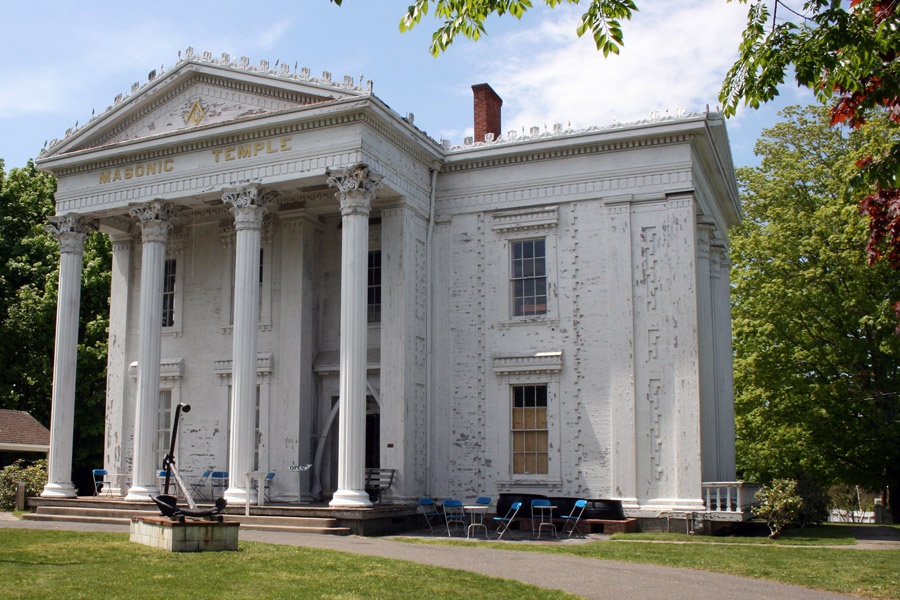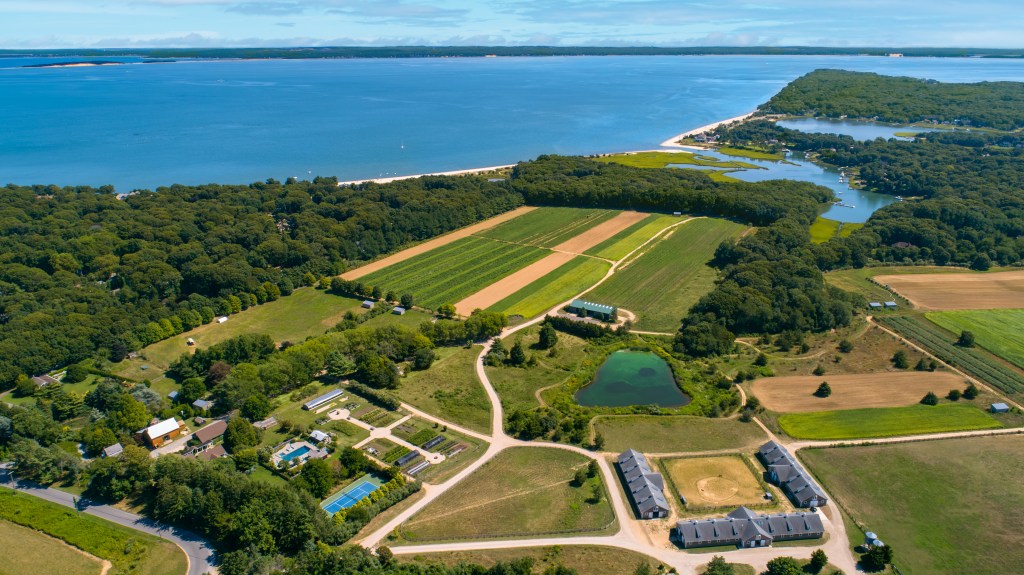The Architecture at the Heart of Sag Harbor

Entering Sag Harbor from the north via North Haven reveals the great port of the harbor. Sag Harbor port is filled with yachts like those in Monte Carlo. A historic village brimming with charm and filled with antiques shops, Sag Harbor was founded in the 18th century as a shipping and whaling port. The whaling industry peaked in the 1840s and then declined, and the watchcase industry took over. There are many historic structures—houses, churches and a factory—and the architectural review board makes sure that the historic character of the village is maintained.
In 1846, The American Hotel opened on Main Street in Sag Harbor. It was on the site of a former colonial-era tavern that had seen action during the Revolutionary War. The building remains today and operates as a hotel and restaurant, and is a mainstay of local culture. The hotel has had a loyal clientele of legendary artists and writers, all the way back to James Fenimore Cooper. In its 167 years of operation, the hotel and its famous bar and backgammon tables have hosted some of the greatest luminaries of American culture. It’s an East End counterpart to what once was Elaine’s in Manhattan.

In 1972, 23-year-old Ted Conklin purchased the hotel and returned it to its illustrious origins, creating one of the nation’s foremost wine cellars. There are eight rooms in the hotel, each fitted with a Jacuzzi tub, and priced at around $400 per night. Rumors abound that Conklin wants to sell the hotel, but he says they are unfounded. The hotel will soon have a new neighbor around the corner, the Watchcase condominiums built in the former Fahys Watchcase Factory. In 1881, the Fahys Watchcase Factory opened its doors just a block from Main Street. The factory had a long history in the town and was a major presence. Everyone was connected somehow to the factory, either working there or knowing someone who did. In 1936, Bulova purchased the factory and operated it until 1981. From that point forward for 30 years, the building sat empty and fell into disrepair.
By 2011, Cape Advisors had acquired the property and began renovations with restoration architect Beyer Blinder Belle, who proceeded to transform the block-long building into 64 luxury condominiums. The team painstakingly restored the exterior, removing each of the 20,000 bricks on the façade to clean and replace them. The cornice, which had fallen off, was also replicated and replaced. On the interior, without covering up the wooden beams on the ceiling, the floors were raised 14 inches to add room for the HVAC equipment. Raising the floor balanced out the effect of the windowsills, which were set high in the original building to allow a maximum amount of sunlight to shine on the workmen’s benches.
Cee Brown, chairman of the architectural review board in Sag Harbor and the salesperson representing the Watchcase condos for the Corcoran Group, said that the project is already more than 50% in contract. The prices range from $1 million to $10 million, and the work will be completed by the summer of 2014. They are billing this development as a one-time-only opportunity to own a historic luxury condo of this kind. The address is 15 Church Street.
From the penthouses of the Watchcase factory is a view of the Old Whalers’ Church, a historic structure dating from 1844. This First Presbyterian Church is one of the best surviving examples of Egyptian Revival architecture in America. Designed by architect Minard Lafever, it originally had a steeple that was knocked off during the Great Hurricane of 1938. At 185 feet tall, the steeple was visible to ships all the way from Montauk Point. The three-part façade was meant to recall Egyptian temples, and in particular to symbolize Solomon’s Temple. The interior of the church, which seats more than 800 congregants, was designed in Greek Revival style, with Corinthian columns and a coffered ceiling. It features Long Island’s oldest pipe organ in use. The church was added to the National Register of Historic Places in 1994.
These are just a few of the historic buildings in Sag Harbor, a place that cares greatly about preserving its historic fabric. Don’t miss them as you walk through the village.






